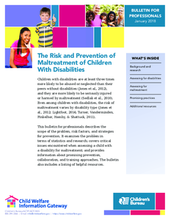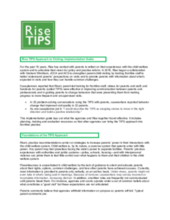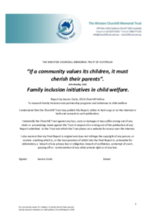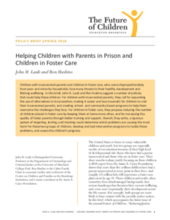Displaying 1651 - 1660 of 2496
Children with disabilities are at least three times more likely to be abused or neglected than their peers without disabilities, and they are more likely to be seriously injured or harmed by maltreatment. This bulletin describes the scope of the problem, risk factors, and strategies for prevention.
The federal Government of Canada has reached a settlement with the First Nations victims of the so-called “Sixties Scoop,” according to this article from Indian Country Today.
This implementation guide lays out what New York City child welfare agencies and Rise together found effective in strengthening parent-child visiting by training frontline staff and providing more information to parents. The guide includes planning, training and evaluation resources so that other agencies can bring the TIPS approach into frontline practice.
This Churchill Fellowship has explored family inclusion initiatives in the USA, Canada, Norway and the UK and has found that family inclusion is a pathway to better outcomes for children and young people including restoration and permanency.
The Nourished and Thriving Children toolkit was designed by SPOON to build capacity among the foster care community in feeding and nutrition topics so that they are equipped to address challenges commonly experienced by foster children.
In this brief, John H. Laub and Ron Haskins suggest a number of policies that could help children with incarcerated parents and children in foster care.
This video from Rise Magazine features tips from parents who have had their children placed in foster care in the U.S. to other parents in the same situation on how to handle visits with their children in the care system.
This video from Rise Magazine is designed to include in training for caseworkers, visit coaches, parent advocates and other frontline staff who will supervise or support parents during visits with children in foster care.
This pilot study reports the baseline data of a prospective longitudinal study examining the educational achievements of grandchildren being raised by grandparents in parent absent homes.
This online course on implicit bias was developed by the Center for the Study of Social Policy (CSSP) and the Kirwan Institute for the Study of Race & Ethnicity to aid practitioners in understanding and addressing racial bias in the US child protection system.





